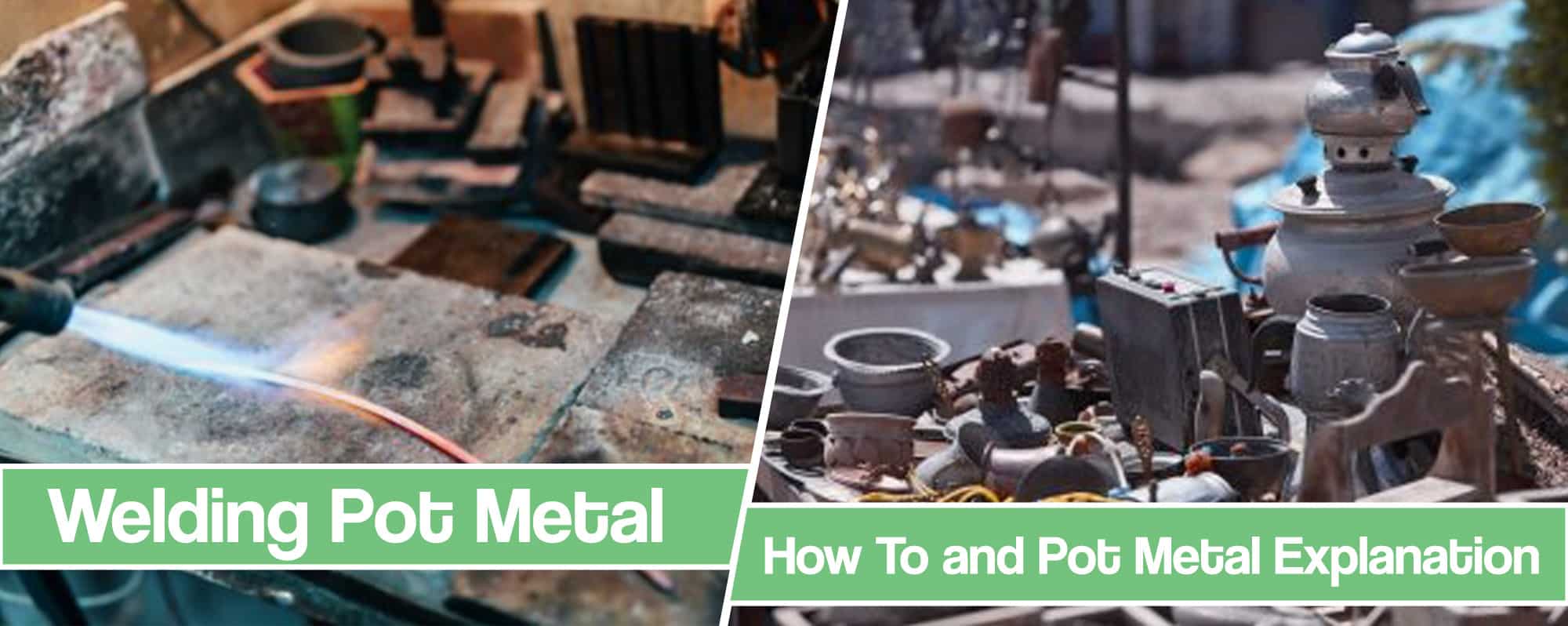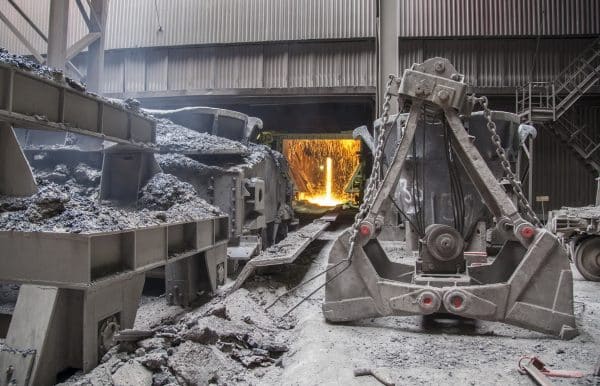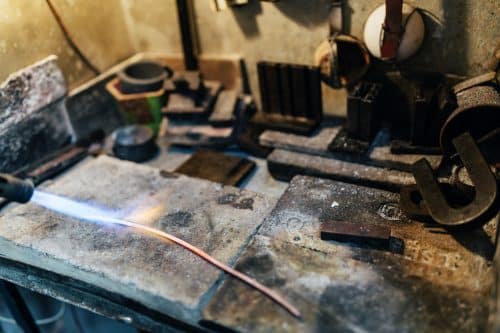The term pot metal is often thrown around in the manufacturing industry. Some even like to refer to it as “monkey metal” or even “white metal.”
Whatever the term you decide to go for, it is a form of inexpensive metal that is often used for making a cheap casting.

But you wouldn’t be here if you didn’t have some questions about pot metal welding. Today, we answer some of the main questions about pot metal and resolve the misconceptions surrounding it.
What is Pot Metal?
Pot metal (also called monkey metal or even die-cast zinc) is a term colloquially used for types of metal that are inexpensive, have a low melting point, and are low in quality. In most cases, it consists of aluminum, tin, lead, and copper. Some other additional elements found in pot metal are zinc, iron, cadmium, and magnesium.
The term pot metal originates from the automotive industry from the 20th century as they used various die-cast metals, which are essentially a combination of different alloys, and melted them down in a pot.

The melted scrap metal is then used to form cast products. Pot metal does consist of a variety of metals, but it primarily consists of zinc. After melting down all of these different types of metals together it changes the properties of all of them. This is what gives the end product, or the monkey metal that comes out of it, a low melting point.
Is Pot Metal Magnetic?
One of the great questions when it comes to pot metal is – “Is pot metal magnetic?” This type of metal was created in the automotive industry when workers gathered up a bunch of non-ferrous metal scraps and melted them together in a chamber (pot).
Even though there are many types of metals thrown into the mix, the base metal is zinc, which is not magnetic. There is some iron thrown into the mix as well, which is usually found in small amounts within the pot metal because it has a higher melting point. Because of the small amounts of iron found within it, pot metal is not going to stick to a magnet.
Benefits of Pot Metal
Repairing pot metal can be very tricky, especially due to its low point of melting. So it takes a lot of patience if you want to repair or weld these materials. However, sometimes you will have to finish certain items in a mold. This is where pot metal comes in hand.
The greatest benefits of pot metal include:
- Mixed alloy materials are lightweight and portable.
- Pot metals have lower volatility, meaning that they require low heat and they also oxidize faster.
- A variety of items can be welded with the help of mixed alloys.
- Welding pot metal makes it much easier to change items into molds.
- It represents one of the best ways of preserving scrap metal.
- You don’t need complex tools to weld or repair pot metal.
Common Uses of Pot Metal
Pot metal actually doesn’t age well and is used to make items that are not exposed to the elements as much. But there are still several useful applications for it.
- Household use: It is the thing used for a variety of objects around the household. For instance, cookie cutters and toy boxes, and toys are made out of it. Also, you will find it in cheap furniture fittings as well.
- Electronics and accessories: Before modern, electronic windows became a thing, pot metal was used for making automotive window cranks. You will also find it in jewelry.
![Pot Metal Welding Guide - What is Pot Metal & How to Weld It? [2025] 3 image of pot metal toy cars](https://weldingpros.net/wp-content/uploads/2021/03/pot-metal-car-toy-e1615222361440.jpg)
Can You Weld Pot Metal?
Welding pot metal can be difficult because you can never know the exact composition of its alloys. For instance, welding or repairing pot metal with aluminum is very difficult. On the other hand, pot metal repair that has a high concentration of zinc is a bit dangerous to do.
Due to its low melting point, welding pot metal can be a stroke of luck. One can easily make a mistake and melt the metal if your welding machine produces too much heat. Because of that, welders should better fuse pot metals parts and repair them like that rather than try to weld them together.
Identifying Composition of Pot Metal
![Pot Metal Welding Guide - What is Pot Metal & How to Weld It? [2025] 4 image of table with pot metal trinkets](https://weldingpros.net/wp-content/uploads/2021/03/pot-metal-trinekts-e1615223155990.jpg)
A pot metal mix can be a problem to identify. It is literally a toss-up and a bond of different materials together. It can be easily confused with the base metal that was used to create it.
Pot metal repair may not go so well due to the lack of clarity as you try to treat the metal the same as you would handle its primary ingredient. The best way to approach this predicament is to test the metal out by heating it up. That way, you will determine the amount of heat that one has to apply.
Additionally, if it gives off white smoke, you will know that it contains a high level of zinc. The best way to determine the difference between aluminum and pot metal is by weighing it. Monkey metals are much heavier as opposed to aluminum.
How to Weld Pot Metal
Welding or soldering pot metal parts is truly difficult mainly because of their low quality. They will not behave the same as regular metals do and welders will often make mistakes. One wrong move can navigate you towards disaster.
Set your welder to a low temperature. 80 amps are ideal. It might also be necessary to clean the weld area with a wire brush. Choose the correct filler rod. A rod with a melting point between 400º F to 500º F works best. Also, high-quality rods prevent bad welds.

Get a pot metal restoration kit which you can find in a local shop. If you plan to use a TIG welding process on pot parts, use non-corrosive flux. Zinc aluminum brazing rods can be used for TIG welder when repairing pot metal. This is a material that doesn’t have high tensile strength. Too much heat can easily ruin your work. After finishing parts of metal that contain aluminum, it is best to wait around 10 seconds for it to cool down.
Conclusion
Pot metal is a very interesting type of metal. You don’t see it used for serious work but in certain cases, someone may decide to use it. Soldering and welding it can be quite difficult as it is sort of a mixed bag. Therefore, sometimes it is better to employ a pot metal restoration kit for pot metal repair. All in all, if you plan to work with this type of metal, you better have a good reason, or else you are in for a long night.
- Read the discussion about pot metal welding here https://forum.millerwelds.com/forum/welding-discussions/4596-pot-metal-identification
- Read more about pot metal jewelry repair https://orchid.ganoksin.com/t/repair-of-pot-metal-jewelry/32987/3





